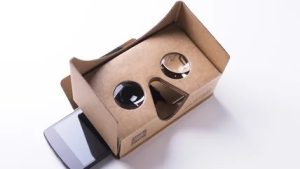
Times are changing and everyone wonders what is next. While some look optimistically toward future innovations, many have a sense we are not prepared for the future that lays ahead, or worse that someone else is shaping our future without our permission. Some people fear that the billionaires have closed in, and they alone shape the products we buy, the news we consume, even the entertainment we enjoy. While none of us have a crystal ball, predicting and adapting to the future is an essential task for a hyperlinked librarian
How do we predict the future? How do we prepare for the future? How do we recognize trends to participate in them? How do we remain connected to our principles and mission but remain relevant? Can libraries exist outside of a profit-driven information model? What’s next? These are all questions I ask myself as I plan a career in public libraries.
To prepare for the future, Library 2.0: A guide to participatory library service challenges us to start with asking, “Who are your current users? Who in your community is not using your library?” (Casey & Savastinuk, 2007, p.23). Meeting the needs of our community, whether they enter the library building or not, more fully addresses our mission as hyperlinked librarians. All planning must start with users. “This librarian understands that the future of libraries will be guided by how users access, consume and create content” (Stephens 2006).
Mathews (2012) challenges us to Think Like A Start Up, recommending we “Don’t think about better vacuum cleaners, think about cleaner floors.” We can measure bodies that enter the building and how many books they check out, but how do we measure the connections they make and the knowledge and experience they gain. Mathews also asks us to consider, “What can we create today that will be essential tomorrow?” Rather than focusing on what was (a building full of books), we should focus on what can be.
But it is essential that we understand it will not be a smooth path forward, it will evolve, and it will be chaotic. “We are now living in the chaotic world, and we do not have a choice regarding where we can position ourselves. Our choice lies in how we respond.” (Stephens, 2016, p. 22) We must be comfortable enough with the chaos to challenge ourselves and dive in. As Booth recommends, “Don’t just watch others with envy or read about it: learn by doing!” (Booth, 2013, p. 2). New technology can be intimidating, and it may not fit in with our preconceived notions, but we have to approach service model focused on the skills are users need, when they need them, not at some later date that fits with our plans.
Denning (2015) acknowledges that disruption is pervasive, but that just moving everything into the digital space without considering if it is useful is a mistake. Denning suggests instead that we approach change with the goal of delighting users and imagining the future they want. Consider what people already love and aim to do it better, faster, cheaper, more mobile, more convenient, more personalized for users.

One other aspect of disruption is the ever-changing landscape of tech companies. There seems to be little warning when companies decide to no longer support their applications. Virtual Reality (VR) is a new technology that often requires equipment to experience, and like many new technologies before it, libraries have jumped at the opportunity to provide access (ALA, n.d.). One low-cost option was Google Cardboard which used a cardboard headset combined with the user’s cell phone to create a VR experience. Unfortunately, like many new technologies, Google ended the project suddenly after deciding it didn’t fit with their goals (O’Neill, 2024). Libraries that invest in new tech and attempt to look forward will sometimes be thwarted by tech companies themselves, which is just one more aspect to the chaos of evolving.
Denning, S. (2015). Do We Need Libraries?
Casey, M. E., & Savastinuk, L. C. (2007). Library 2.0: A guide to participatory library service. Medford, N.J: Information Today. Please read Chapters 1, 2, 3, “An Open Letter to All Library Directors” in Chapter 4 on page 40, and Chapters 5, 7 and 8.
Mathews, B. (2012). Think Like A Start Up.
Stephens, M. (2016). Chapter 1: “The Hyperlinked Librarian: Skills, Mind-Sets, and Ideas for Working in the Evolving Library” in The Heart of Librarianship: Attentive, Positive, and Purposeful Change
Booth, M. (2013). People and UTS Library.
Stephens, M. (2006). Into a new world of librarianship: nextspace_002
O’Neill, S. (2024, July 22) Why Google Discontinued Cardboard VR
ALA (n.d.) Virtual Reality | Center for the Future of Libraries
Your title of “Crystal Ball” is what got me to take a look at your post. I think that’s a great visual for the chaotic change that is happening around us as future and current library professionals. Before us in this hazy little ball is a sense of unknown where it is sometimes difficult to predict what the next move may be.
Is this what is best for our users??
It’s funny to imagine us huddled over little crystal balls in our offices as we ask for the next innovative change for our community members. A fun image that reminds me of using AI for program ideas. Anything like that can give us random even interesting ideas, but our planning for future projects never stops at that first question.